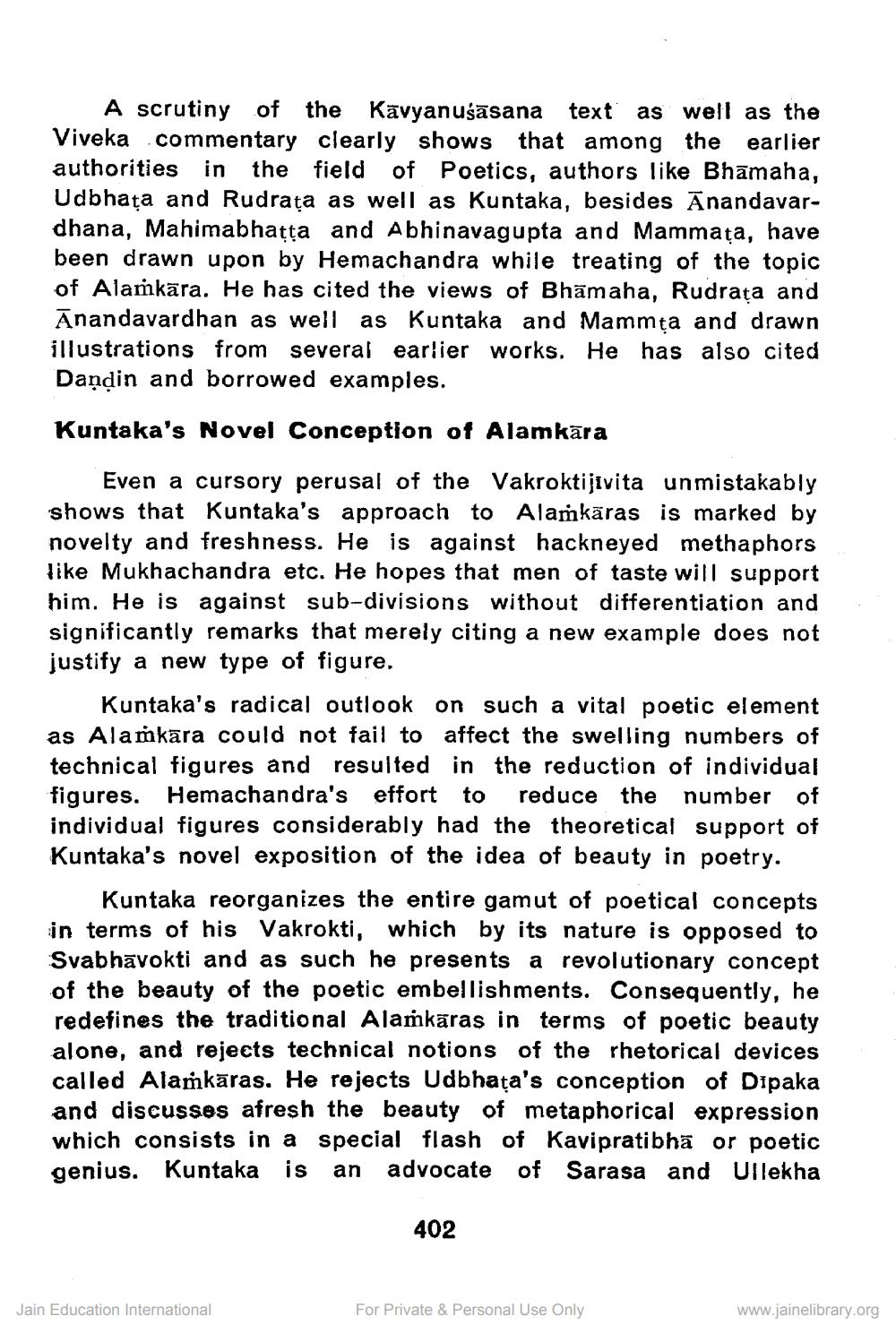________________
A scrutiny of the Kavyanušāsana text as well as the Viveka commentary clearly shows that among the earlier authorities in the field of Poetics, authors like Bhāmaha, Udbhata and Rudrața as well as Kuntaka, besides Ānandavardhana, Mahimabhatta and Abhinavagupta and Mammața, have been drawn upon by Hemachandra while treating of the topic of Alamkāra. He has cited the views of Bhāmaha, Rudrața and Anandavardhan as well as Kuntaka and Mammta and drawn illustrations from several earlier works. He has also cited Daņdin and borrowed examples.
Kuntaka's Novel Conception of Alamkāra
Even a cursory perusal of the Vakroktijivita unmistakably shows that Kuntaka's approach to Alamkāras is marked by novelty and freshness. He is against hackneyed methaphors like Mukhachandra etc. He hopes that men of taste will support him. He is against sub-divisions without differentiation and significantly remarks that merely citing a new example does not justify a new type of figure.
Kuntaka's radical outlook on such a vital poetic element as Alamkāra could not fail to affect the swelling numbers of technical figures and resulted in the reduction of individual figures. Hemachandra's effort to reduce the number of individual figures considerably had the theoretical support of Kuntaka's novel exposition of the idea of beauty in poetry.
Kuntaka reorganizes the entire gamut of poetical concepts in terms of his Vakrokti, which by its nature is opposed to Svabhāvokti and as such he presents a revolutionary concept of the beauty of the poetic embellishments. Consequently, he redefines the traditional Alamkāras in terms of poetic beauty alone, and rejects technical notions of the rhetorical devices called Alamkāras. He rejects Udbhata's conception of Dipaka and discusses afresh the beauty of metaphorical expression which consists in a special flash of Kavipratibhā or poetic genius. Kuntaka is an advocate of Sarasa and Ullekha
402
Jain Education International
For Private & Personal Use Only
www.jainelibrary.org




